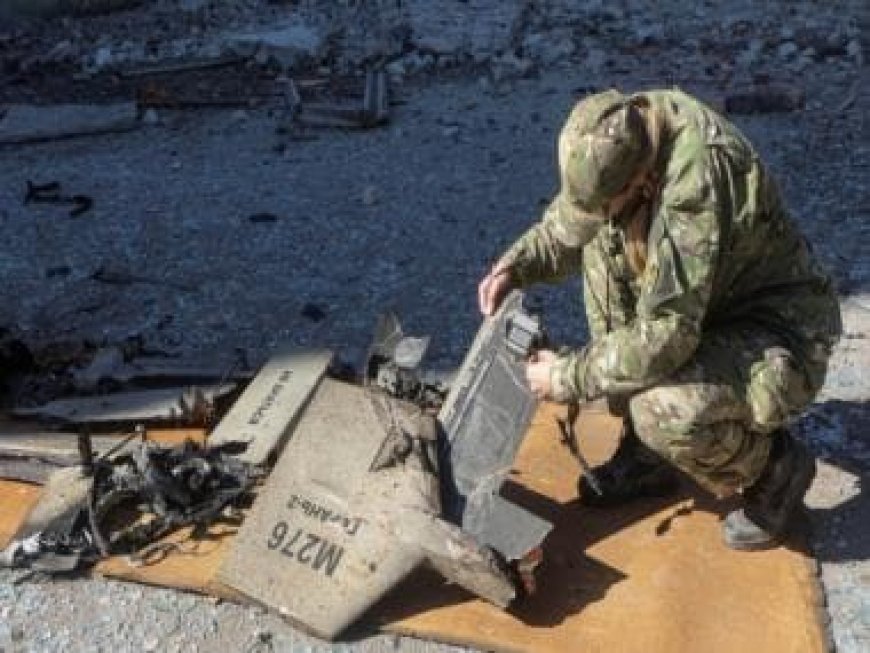Ukraine's secret report reveals European tech in Iranian Kamikaze drones used by Russia
Ukraine's secret report reveals European tech in Iranian Kamikaze drones used by Russia

A confidential document sent by the Ukrainian government to Western allies has exposed that Iranian kamikaze drones used in recent attacks on Ukrainian cities contain components sourced from Europe.
The report, obtained by The Guardian, discloses that over 600 drone attacks on cities occurred in the previous three months, all equipped with Western technology. Notably, the Shahed-131 drone carried 52 electrical components from Western companies, while the Shahed-136 model, with a flight range of 2,000km and cruising speed of 180kmh, contained 57 such components.
The 47-page document, sent to the G7 nations in August, calls for support in obtaining long-range missiles to target production facilities in Russia, Iran, and Syria.
The comprehensive report, titled “Barrage Deaths: Report on Shahed-136/131 UAVs,” was collaboratively drafted with input from Ukraine’s central research institute of armaments and military equipment, as well as its intelligence services.
The document provides the most recent analysis of Russia’s evolving drone tactics and production plans, starting from the first use of Shahed drones in the Kharkiv region on September 13, 2022, in the city of Kupiansk.
The report revealed that a break in attacks from November 17 to December 7, 2022, was likely due to adjustments required for the drones to function effectively in Ukraine’s winter conditions, indicating potential cooperation between Russia and Iran in drone production.
Also, Shahed-136/131 UAVs are transported from Iran to Russia across the Caspian Sea, passing through Iranian and Russian ports.
The report notes that electronic component markings on drones used in Ukraine were deliberately destroyed, potentially using lasers. Russian forces have started referring to the drones as Geranium-1 and Geranium-2, possibly as part of an agreement to conceal Iran’s involvement.
Russia and Iran are collaborating on developing a new engine for the Shahed-136 to enhance its speed and range.
The report also reveals the presence of various components produced by Western companies in the downed drones, which were identified by the G7 nations, including France, the United States, the United Kingdom, Germany, Japan, Italy, Canada, and the European Union.
Components identified include a fuel pump manufactured in Poland by the German company Ti Automotive Gmbh, a subsidiary of the British multinational TI Fluid Systems. Additionally, a microcontroller with built-in flash memory and a low-voltage drop regulator with inhibitor from Swiss firm STMicroelectronics were found in a Shahed-136 model.
Another Western component was an integrated circuit of a buffer network driver and a transistor made by International Rectifier, a subsidiary of the German firm Infineon Technologies AG.
In response to these findings, TI Fluid Systems did not comment, but the company has previously stated that it does not sell its equipment to Iran. STMicroelectronics emphasized their adherence to global trade compliance regulations and export controls.
Infineon Technologies AG denied selling components to Iran and stated their commitment to compliance with sanctions against Russia, even liquidating their operation in Russia in March of the previous year.
The Ukrainian experts identified various components from Dutch company NXP Semiconductor, including a 14-channel integrated power management circuit and a microprocessor in the Shahed-131 model. Additionally, a power transistor and integrated circuit from International Rectifier were found.
A Shahed-131 also contained components from STMicroelectronics and a GPS tracker chip from the Swiss firm U-blox. U-blox expressed strong condemnation for Russia’s invasion of Ukraine, ceased sales to Russia, Belarus, and occupied Ukrainian territories, and implemented policies against the use of their products in weapons.
NXP Semiconductor affirmed its commitment to preventing the misuse of its technology and compliance with export control and sanctions laws.
According to the report, Iran has extended its production capabilities by utilizing a Syrian factory located in the port of Novorossiysk. Nevertheless, drone production is gradually moving to Russia, specifically the Alabuga region in central Tatarstan, while Iran continues to provide the necessary components.
The report highlights Iran’s efforts to distance itself from directly supplying Russia with weapons, citing its inability to meet Russian demand and the intensity of drone usage in Ukraine.
One of the document’s suggestions for action, which may not find favor with Ukraine’s Western allies, includes missile strikes on UAV production plants in Iran, Syria, and potentially Russia. These strikes could be carried out by Ukrainian defense forces if supported by the necessary means of destruction.
Report does not imply any wrongdoing on the part of the Western companies whose components were identified. The report attributes Iran’s easy access to these components to the poorly controlled supply of commercial parts.
What's Your Reaction?



























































